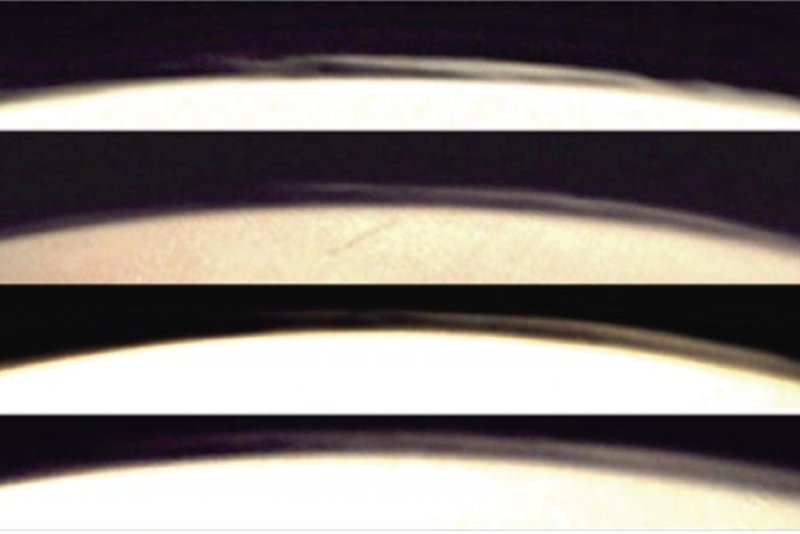A series of images captured by ESA’s Mars Express Visual Monitoring Camera showcases a limb cloud stretching across the edge of the Red Planet. Photo by ESA
Oct. 17 (UPI) -- A new survey of high-altitude clouds on Mars marks the first time researchers have used the webcam on the European Space Agency's Mars Express probe for scientific purposes.
Until now, the webcam was mostly used for science outreach and education. But last year, ESA scientists upgraded the webcam with new software and began capturing images of the clouds and dust storms forming atop the Red Planet's edge -- the planet's "limb."
The probe's other cameras are mostly designed to make high-resolution observations of small targets, but the webcam is ideal for wide-angle views of Mars' distant horizon.
"For this reason, limb observations in general are not so numerous, and this is why our images are so valuable in contributing to our understanding of atmospheric phenomena," Agustin Sánchez-Lavega, a researcher at the University del Pais Vasco in Bilbao, Spain, said in a news release.
Sánchez-Lavega headed the recent survey of some 300 limb images captured by the webcam. The images comprised documentation of 18 different weather, cloud or storm events.
Researchers used Martian weather models inspired by readings from other instruments -- including pressure and temperature data -- to determine the composition of each new cloud formation.
Scientists determined 17 of the distinct cloud formations to be composed of water-ice. The probe's webcam images captured the formation of a single dust storm.
Most of the high-altitude water-ice clouds formed in early morning and afternoon when the sun's rays were not as strong and temperatures were lower.
Images of the dust storm revealed the front to stretch more than 1,200 miles across its outer edge, with average thickness of 40 to 80 miles. The storm formed at an altitude of 40 miles.
Shared online this week, the survey of Martian clouds will be published in the journal Icarus in January 2018.
"This long-term monitoring has allowed us to detect and measure the extent of dust and clouds over the limb of the planet, and study changes with a high cadence of imaging," said Dmitri Titov, ESA's Mars Express project scientist. "We will continue to maintain the database with systematic observations from the webcam to provide wide views of atmospheric phenomena."















